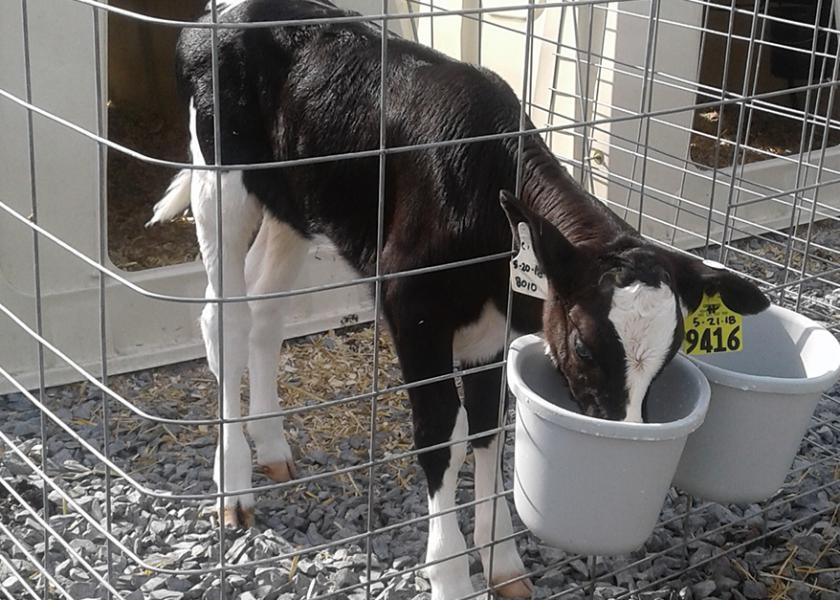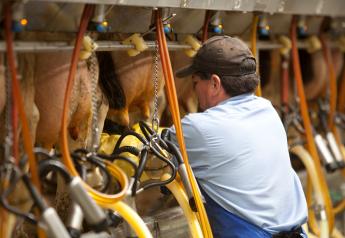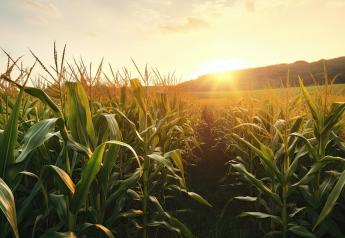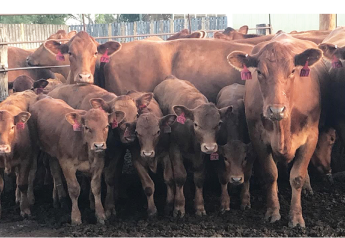The Danger of Dehydrated Calves

Producers across the nation are starting to feel the intense heat as the dog days of summer set in. As the thermometer climbs, farmers are eager to make sure their fans and sprinklers are running to keep lactating and dry cows cool. But just like adult cows, calves are also challenged by hot weather.
During the sweltering summer months, calves become more prone to dehydration. If left untreated, this dangerous condition could become deadly. Jennifer Bentley, Dairy Specialist at Iowa State University Extension and Outreach, lists these signs to look for to help prevent dehydration in calves.
The Ability to Stand and Suckle
Calves who are showing mild signs of depression, weakness and have sunken eyes, yet are still sucking are usually 6-8% dehydrated. However, a calf who will not stand and has cool extremities is in serious condition with a dehydration level of 10-14%. Unfortunately, death usually occurs at 14% dehydration.
Skin Tenting
“Skin tenting is a quick way to evaluate hydration,” Bentley says. “Pinch a fold of skin on the neck and count the number of seconds it takes to flatten. If the skin flattens in less than 2 seconds, this indicates normal hydration. If the skin takes 2-6 seconds to flatten, the calf is about 8% dehydrated. Over 6 seconds would indicate severe dehydration more than 10%.”
Gum Color
Gum color and moisture is another determinate of dehydration. According to Bentley, normal gums will be pink and damp while white, dry gums will indicate dehydration.
Attitude
Just like toddlers, calves tend to get cranky when they become too hot. While the signs may not be as obvious, calves who lack energy or who are breathing heavy may be experiencing heat stress. Other visual signs of heat stress include.
- Reduced movement
- Open-mouthed panting
- Decreased feed intake
- Increased water consumption
“Calf attitude is often the best indicator even if they are showing no other signs,” Bentley says. “If calves need encouragement to get up or drink, monitor them closely for scouring or other illnesses.”
Electrolyte Treatment
Feeding ample amounts of electrolytes is one way to help replenish fluids lost due to dehydration. According to Bentley it is nearly impossible to feed the calf too much electrolytes, but feeding too little is quite common.
“To determine the amount of electrolytes to feed, multiply weight of calf by the percent dehydration, and then divide by 2 to get quarts of liquid needed,” Bentley says. “For example, if a 100-lb calf is dehydrated 8% (100 x 0.08), means 8 lbs. of liquid are needed per day in addition to normal feeding.”
According to Bentley, severely sick calves under heat stress can sometimes require up to 20 quarts of water daily to replace the total amount lost, so don’t be afraid to be generous with the fluids. Healthy calves under heat stress will drink between 6 and 12 quarts of water daily just to maintain normal hydration.







